Enjoy a special experience at shrines and temples which have been registered as World Heritage Sites and National Treasures - Miyajima, Hiroshima
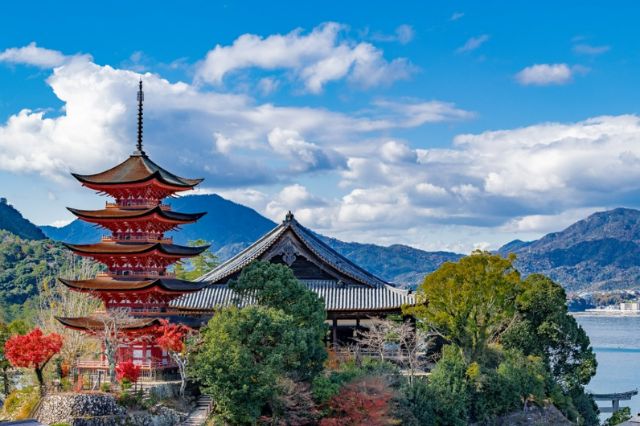
Enjoy a premium culture experience set in Miyajima, an island registered as a World Heritage
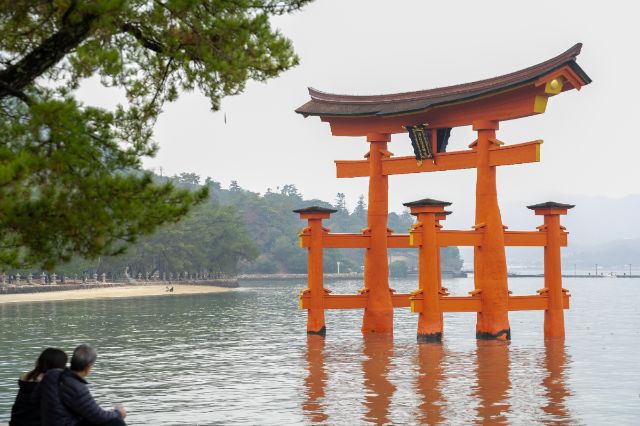
The large torii gate at Itsukushima Shrine, the symbol of Miyajima, is not buried on the ocean floor. It was built only using its own weight.
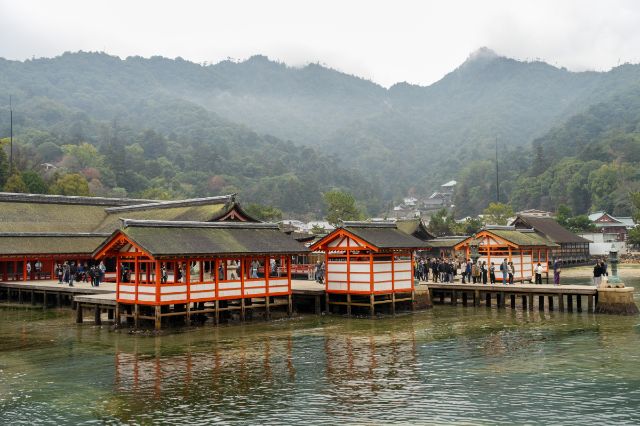
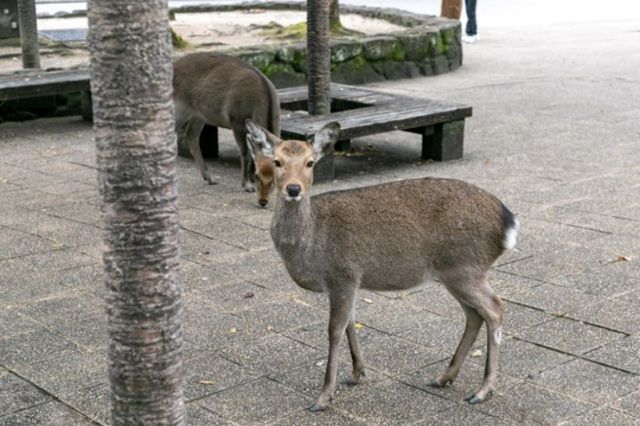
Many wild deer inhabit Miyajima. You can see deer all over the island. (Feeding them is prohibited.)
Miyajima (official name: Itsukushima), the setting for this event, is an island in the northwestern part of Hiroshima Bay. As one of the most scenic spots in Japan,it is one of Japan's three famous views, along with Matsushima Island in the Rikuzen region and Amanohashidate in the Tango region. It is widely known as Akino Miyajima," or Miyajima of the Aki region.
In addition, Itsukushima Shrine was registered as a World Heritage Site in 1996. This does not just include the shrine premises. The 431.2-hectare area, including the inner sea from the large torii gate, Itsukushima Shrine, and the woods in the Misen Primeval Forest, was also designated as the "core area," and the entire island was designated as the "buffer area." In other words, the whole of Miyajima is an area registered as a World Heritage Site.
In this hands-on experience tour, guests experienced culture in a special place that normally cannot be entered by the public: Daisho-in, the main temple of the Omura School of the Shingon Sect of Buddhism. They also enjoyed the cuisine made by Chef Kenji Akai of AKAI, one of Hiroshima's most famous restaurants.
THE LEGENDARY JAPAN Project
~Program~
Day1
Strolling around Miyajima Island in a rickshaw
Itsukushima Shrine, Official Worship
Daisho-in Disaster Prevention and Good Luck Ceremony (Homa Prayers in Chokugando Hall)
Daisho-in Banquet Ceremony (enjoying eating the special course from AKAI together in the large hall)
Staying in Iwaso, a ryokan inn on Miyajima
Day2
Daisho-in Longer Life Ceremony (morning service at Maniden Hall)
Daisho-in Strolling on the Premises
Eating breakfast at Iwaso, a ryokan inn on Miyajima
Strolling through Miyajima Omotesando Shopping Street
Day 1
Strolling around Miyajima Island in a rickshaw
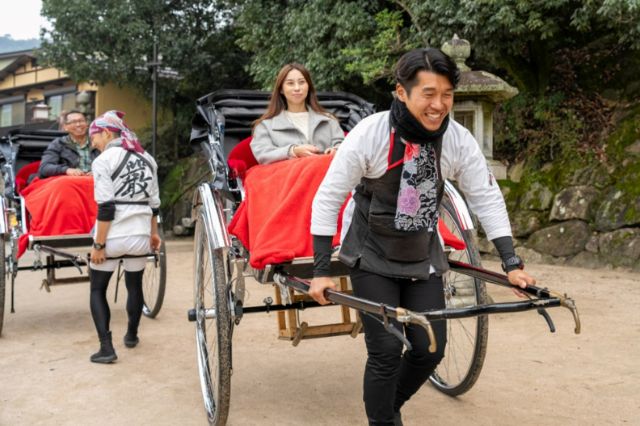
Rickshaws were used as a transportation method in Japan from around 1870 to 1930. Currently, they are just used for sightseeing purposes in tourist spots such as Asakusa in Tokyo and Kyoto.
To know Miyajima, visitors strolled through the island with a rickshaw. They boarded a rickshaw from the entrance of Miyajima and enjoyed sightseeing along Hiroshima Bay. They first went through the large stone torii gate and headed to Itsukushima Shrine.
Itsukushima Shrine was built in 593. Taira no Kiyomori, a military leader of this time,became Aki no Kami (a god of Aki), and Itsukushima Shrine is worshipped as the guardian deity of this one-story structure. It was renovated to the current state of the shrine's main building. It is not only a World Cultural Heritage Site. Currently, 6 buildings, such as the main hall, the hall of worship, and the corridor, are designated as national treasures, and 14 buildings are designated as important cultural properties.
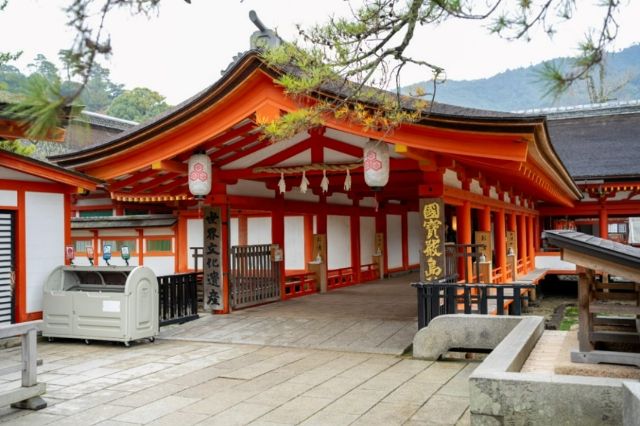
Itsukushima Shrine - Official Worship
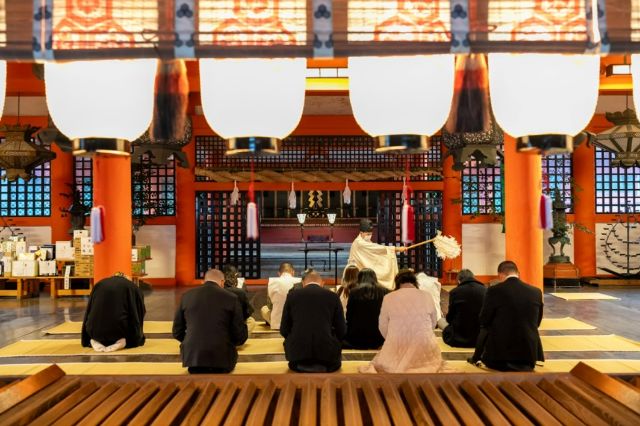
Official worship is being held in the main hall of Itsukushima Shrine. During the purification rites, it is considered good manners to bow one's head, stand tall, and receive purification.
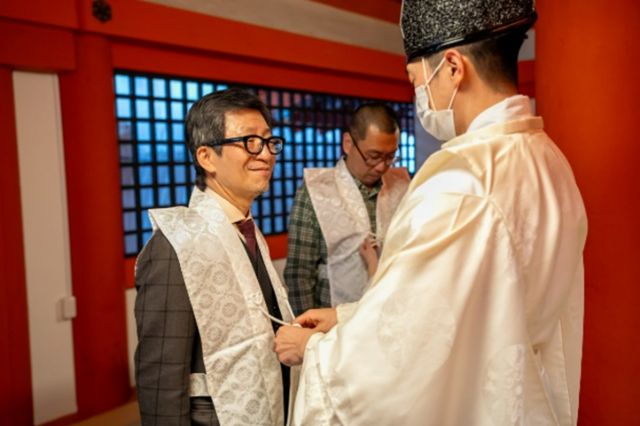
Wearing a ceremonial robe in place of formal attire when proceeding before an altar.
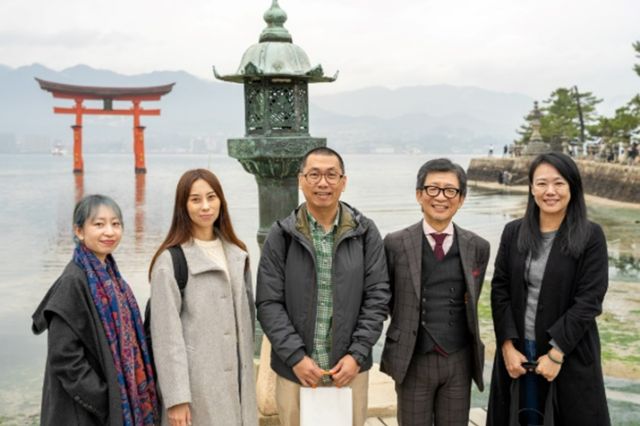
After official worship was finished, a commemorative photo was taken with the large torii gate in the background.
Visitors went through the corridor, purification hall, and worship hall, all of which are national treasures, before going to the Main Shrine for the official worship. During official worship, a Shinto priest performs a purification rite and purifies the worshippers and their surroundings with Onusa, which is believed to have the power to ward off evil spirits. When this is finished, one can proceed to the front of the gods enshrined at Itsukushima Shrine: Ichikishima Himeno Mikoto, Tagori Himeno Mikoto, and Tagitsu Himeno Mikoto. In front of these supreme deities, the Shinto priest performs the prayers of the worshippers with Norito, or Shinto prayers. A branch of a sacred tree is presented to these supreme deities.
After official worship, visitors boarded their rickshaws again and headed to Daisho-in, the main temple of the Omuro School, Shingon Sect of Buddhism, which has a history spanning 1200 years.
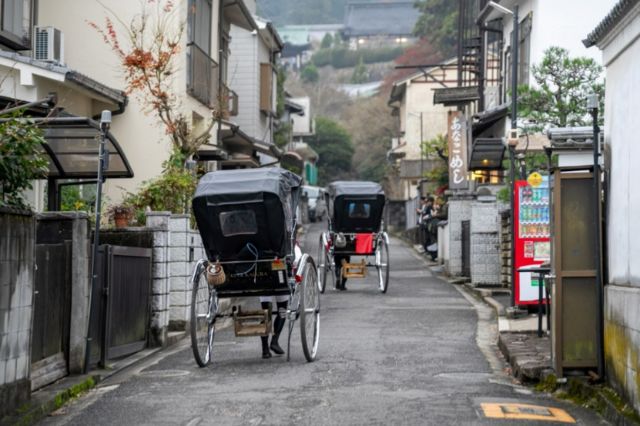
From the exit of the worship route of Itsukushima Shrine, visitors headed inwards around 600m to Mt. Misen. Quite different from the lively approach, visitors pass through a quiet back street.
Many people may think of Itsukushima Shrine when they think of Miyajima. However, Daisho-in, the main temple of the Omuro School, Shingon Sect of Buddhism, which is located at the base of Mt. Misen, is also known as the oldest temple in Miyajima.
Daisho-in is said to have been founded in 806 (the first year of Japan's Daido Era) by the Buddhist monk Kukai. Daisho-in Temple is said to be one of Japan's three major temples to ward off evil and bring about great fortune. Visitors can pray for such things as warding off evil, bringing about great fortune, household peace and prosperity, and success in entrance exams. Daisho-in is a treasure trove of amazing spots, including the Ichigan Daishi that will grant just one wish, as well as Henjokutsu Cave and the 500 Rakan Statues. In addition,buildings with a rich history are dotted all throughout the grounds, so it is packed with incredible highlights.
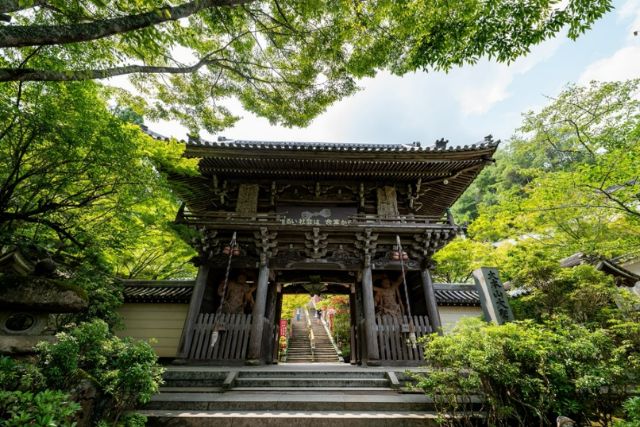
Until 1870 (the 3rd year of Japan's Meiji Era), when the Shinto and Buddhist Separation Order was passed, Daisho-in Temple managed religious services as a separate shrine for Itsukushima Shrine.
Daisho-in Disaster Prevention and Good Luck Ceremony (Homa Prayers in Chokugando Hall)
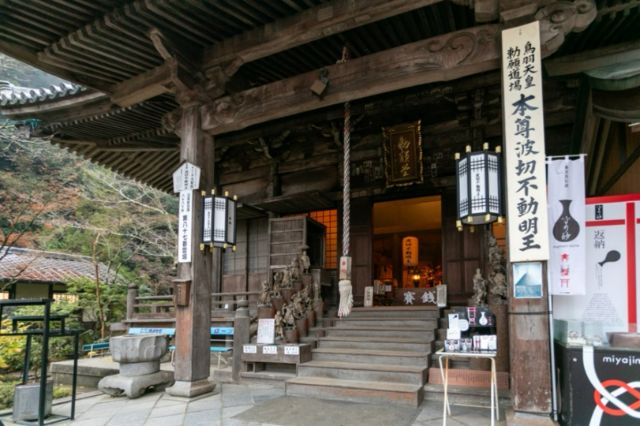
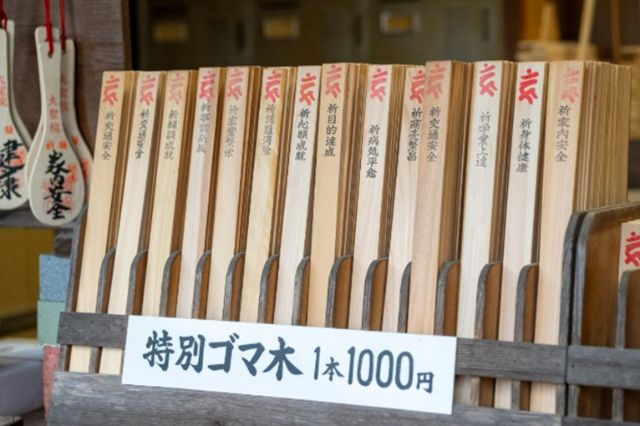
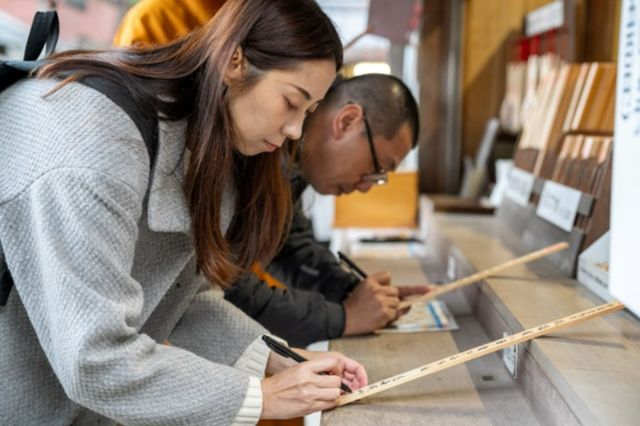
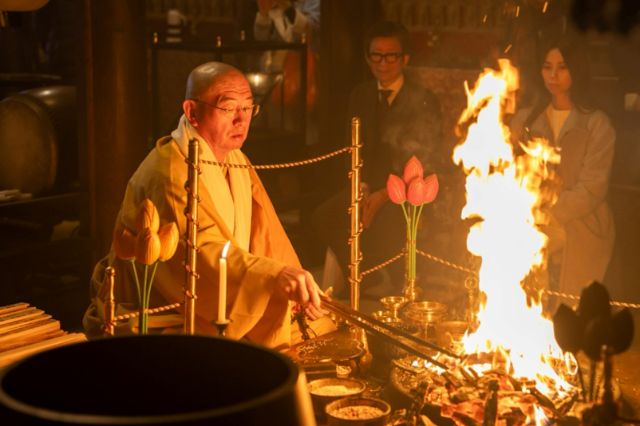
Homa prayers, which are the Disaster Prevention and Good Luck Ceremony, are performed in the Chokugando Hall. Homa prayers are prayers and austerities of esoteric Buddhism in which people pray for the fulfillment of prayers during their time in this world. These prayers are recited with all one's strength and mind in front of the burning flame, and it is said that passions burn up along with the flames. The brightly burning flames are the actual wisdom of Fudo Myoo, and it is said that they have the power to elevate passions to pure wishes and fulfill them.
The disaster prevention and good luck ceremony ended, and visitors headed to the large hall for the banquet ceremony (dining together).
Daisho-in Banquet Ceremony (Enjoying eating thespecial course from AKAI together in the large hall)
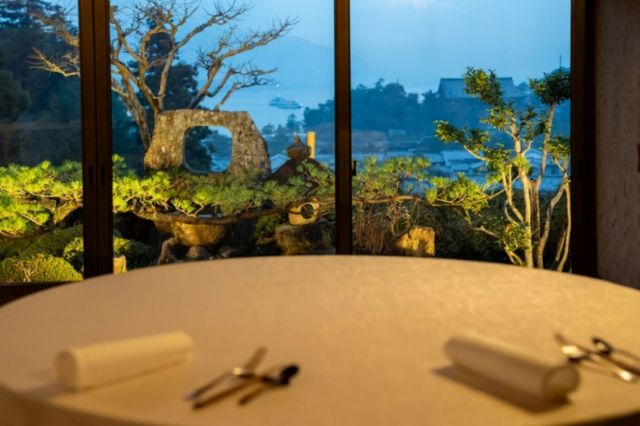
Beautiful scenery that can be seen from the large hall in Daisho-in.
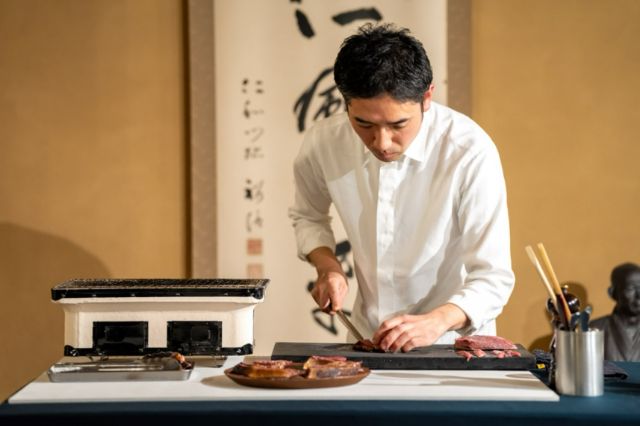
Mr. Kenji Akai, the owner and chef of AKAI.
The banquet ceremony was held in the large hall of Daisho-in Temple. From the large window, visitors got a sweeping view of Miyajima and enjoyed delicious cuisine from AKAI's chef, along with the beautiful scenery of evening changing to night.
Chef Akai's skills shined brightly in the 2017 Excellent Gran Prix in RED U-35, a competition for discovering young talents. In 2021, this talented chef acquired three toques from Gault Millau. He is the owner and chef of this innovative restaurant that sees foodies visit from all over Japan.
presenting the daily food menu.
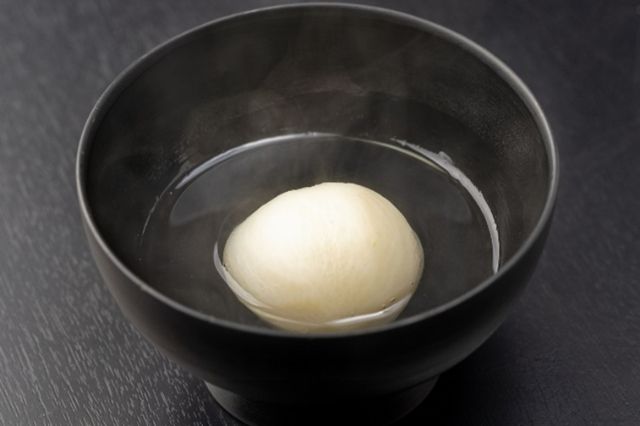
The first dish is a turnip soup from Maekawa Farm in Hatsukaichi City, Hiroshima. The carefully boiled turnips are gentle and soft, and the natural sweet flavors spread throughout the dish.
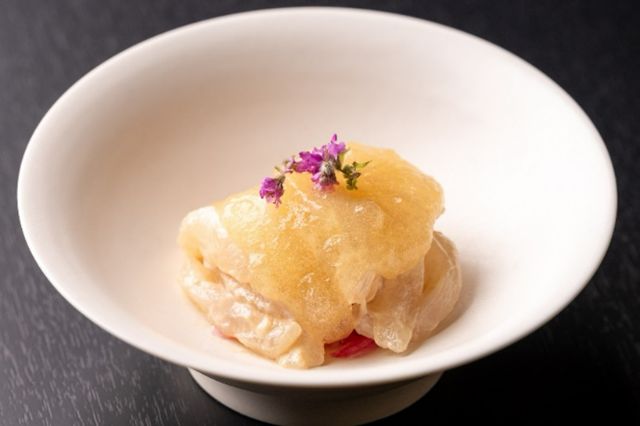
The second dish includes black scraper fish from Etajima in Hiroshima and is dressed with an extremely delicious liver paste. It is freshly made with the sour taste of gentle citrus.
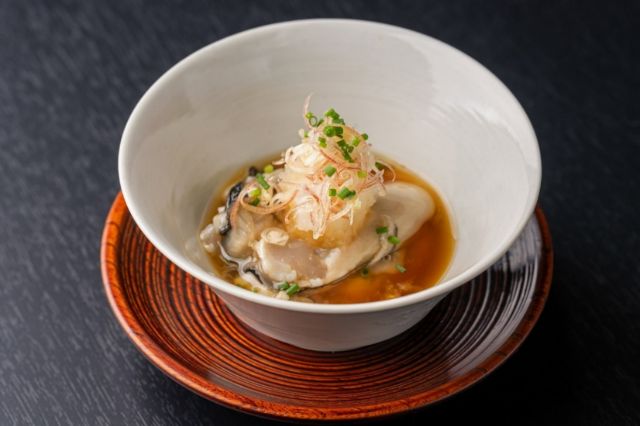
Vinegared oysters use oysters from Etajima in Hiroshima. They are served raw without heating and are fresh and creamy. A masterpiece with tender meat.
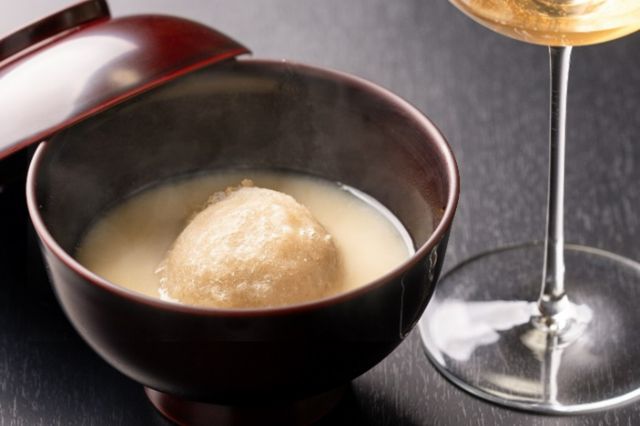
Sake lees soup uses taro root from Maekawa Farm. It is boiled and strained with broth once, and then thoroughly fried to create a thin batter on the outside. One can feel the faintly crisp textures when biting into them.
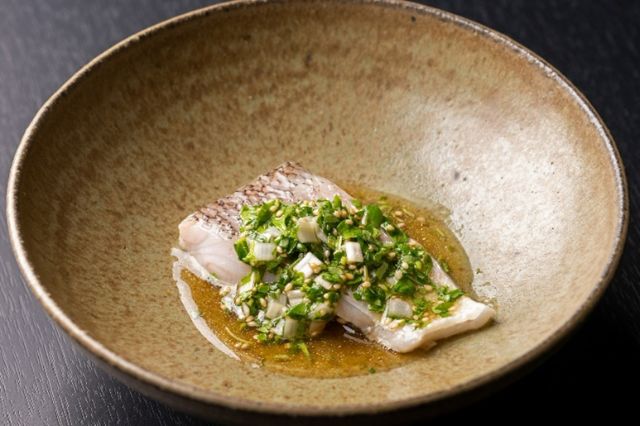
White tilefish from Yawatahama in Ehime, steamed with sake. The tilefish is tender and delicious. The sauce uses herbs from Kajiya Farm in Mihara City, Hiroshima, giving it an ethnic flavor. It is a very fresh combination.
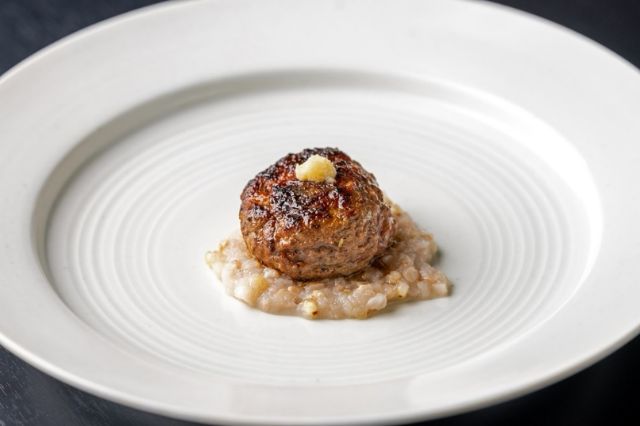
Meatloaf that uses pork and thigh meat from natural duck, by Mr. Sakamoto, the owner of Sakurano-yama Farm in Mihara City, Hiroshima. It includes grated and chopped Iwakuni lotus root as well as buckwheat seeds, giving it a fresh texture.
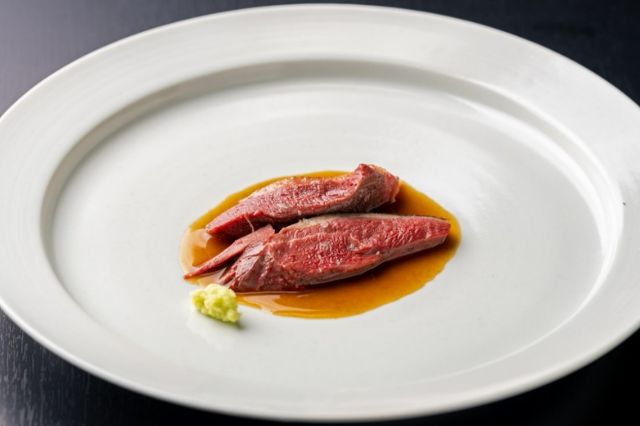
Roasted long-tail duck caught with nets in Kagoshima. The duck is prepared with its skin surface crisply fried, and the meat tenderly and softly cooked. The small cut in the center-left is the breast. It has a transparent, clear taste with meat and sauce.
Chef Akai serves simple, undressed food. The delicate flavors of the ingredients themselves distinctly rise up, and the five senses are sharpened from the very first bite of the first dish. The course composition is also brilliant; the first dish warms up the stomach with warm soup, and the second dish provides cuisine with sour flavors. These dishes stimulate one's appetite with a flow that stirs up one's emotions.
Through all of its dishes, this cuisine drew out the most of the delicious flavors of the ingredients themselves. The different ways of cooking the same ingredients also charmed visitors. They fully enjoyed the innovative, or rather highly creative, cuisine provided by AKAI, as it takes cuisine that was originally French and incorporates Japanese elements into it.
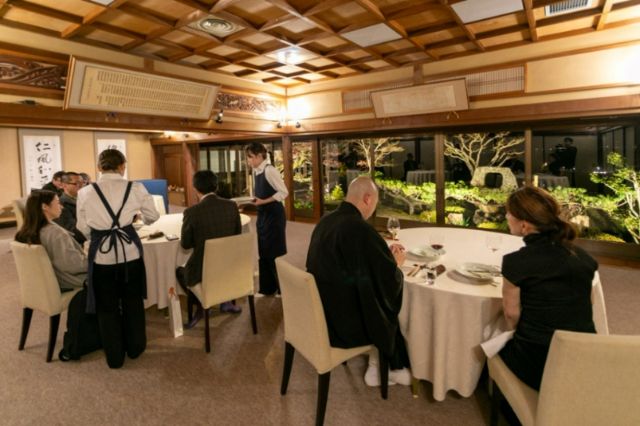
Banquet Ceremony held in the large hall.
Staying in Iwaso, a ryokaninn on Miyajima
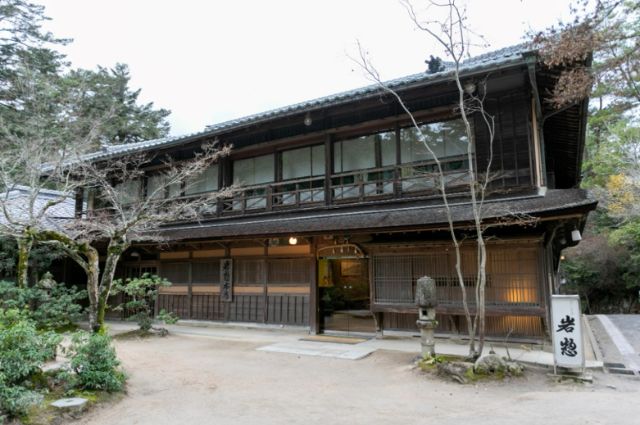
Iwaso, with its elegant wooden structure.
Staying at Iwaso, a long-standing ryokan inn in Miyajima, is located in Momijidani Park, a national park. It boasts a 160-year-long history, and famous writers such as Mr. Natsume Soseki and Helen Keller stayed here. It has also charmed leading figures from Japan and overseas, due to it being the setting for the G7 Hiroshima Summit Working Dinner. Visitors stayed in this famous Ryokan inn on the first day.
Day 2
Daisho-in Longer Life Ceremony (Morning service at Maniden Hall)
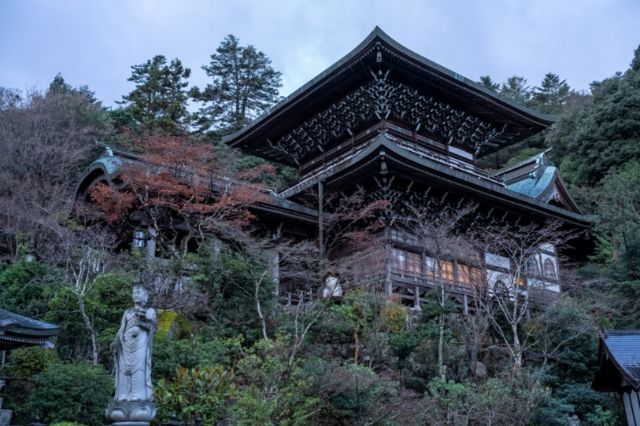
Maniden Hall, where the Longer Life Ceremony was held. The gods here, who are also called the guardian deities of Misen, are worshipped as Sanki Daigongen, or the "three great oni gongen."
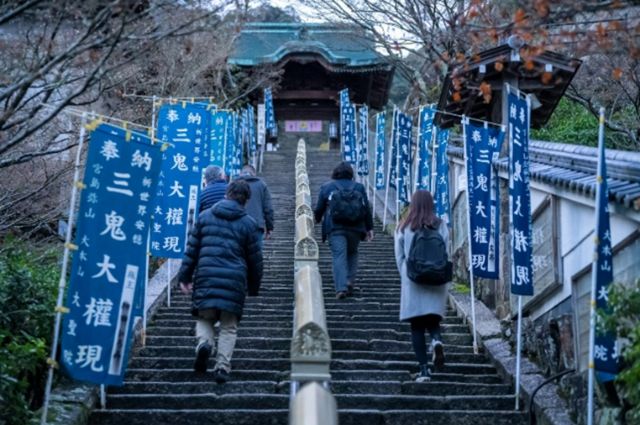
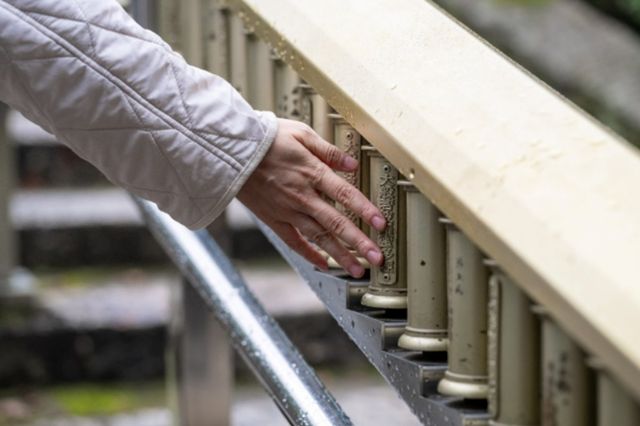
Visitors headed to the Onarimon gate and ascended the stone steps. In the center of these steps is the Great Prajnamaya Sutra (600 volumes). The Great Prajnamaya are sutras that were brought over from India by the great Tripitaka. It is said that if one touches them, they will be granted boundless fortune.
On the morning of the 2nd day, morning services were strictly observed in Maniden hall in Daisho-in Temple. "Mani" can be translated as "long life and happiness." It grants virtue and bestows the power to fulfill wishes from the Buddha. As the concluding ceremony of the tour, it prays for daily happiness and a healthy, long life.
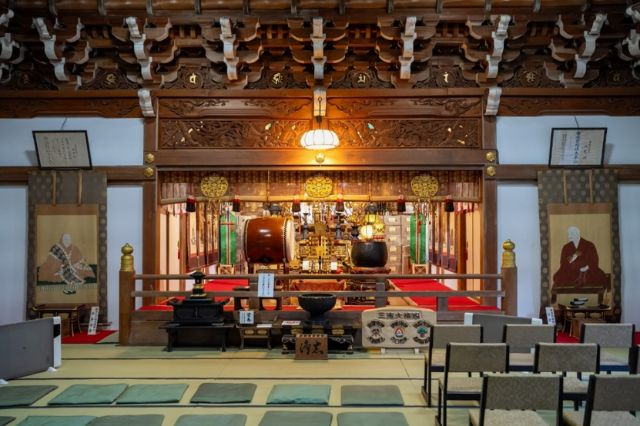
Inside Maniden Hall. Sankido Hall, on the peak of Mt. Misen, is where the gods are officially enshrined. However, Maniden is provided as an alternate place of prayer for visitors who cannot make the climb to the main hall.
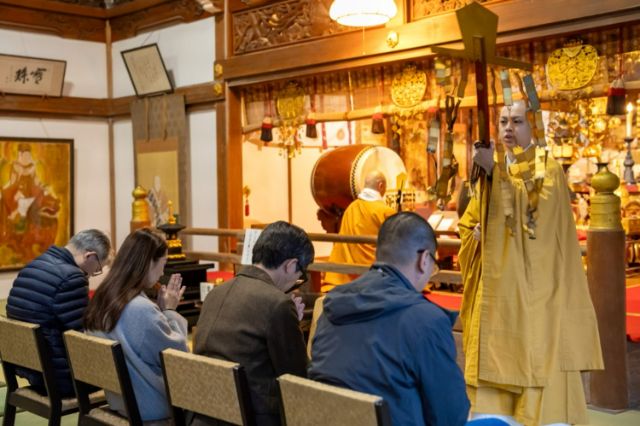
The last prayer on this tour. The Longer Life Ceremony was held at 7:30 in the morning. With its solemn atmosphere and clear early morning sky, visitors felt incredibly inspired.
Maniden is one of the newer structures in Daisho-in. It was constructed in 1976 with a distinctive style of Shinto (gongen) architecture. This style features the worship hall (for prayers) and main hall (an important sanctuary) under the same roof. These two halls are connected by a narrow corridor. Worshippers who enter the building can go to the 2nd floor by ascending the stairs, and from there they can look over the entire premises facing the sea.
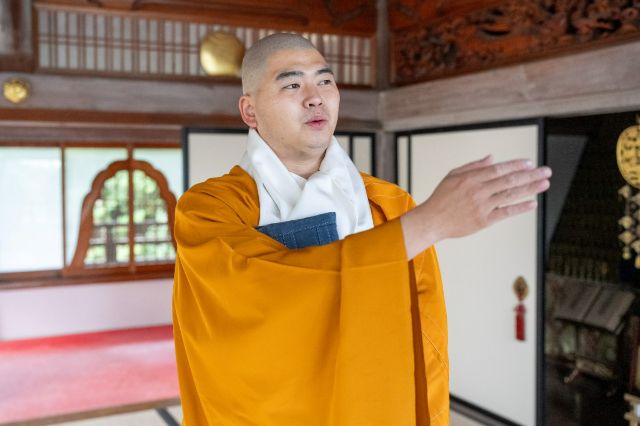
The Longer Life Ceremony ended, and visitors leisurely walked to the Daisho-in premises. The vice-chief priest, Mr. Daiyu Yoshida, guided them personally through Daisho-in.
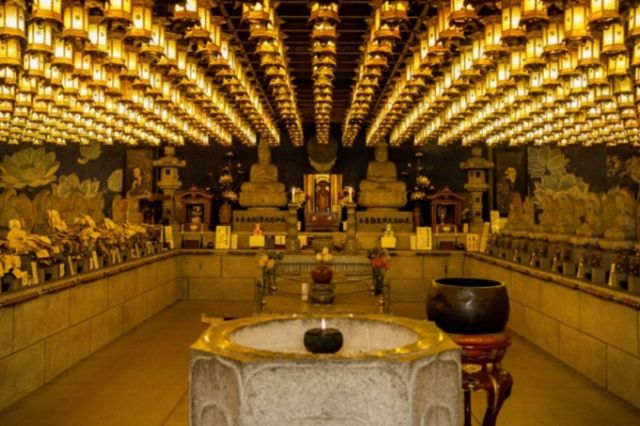
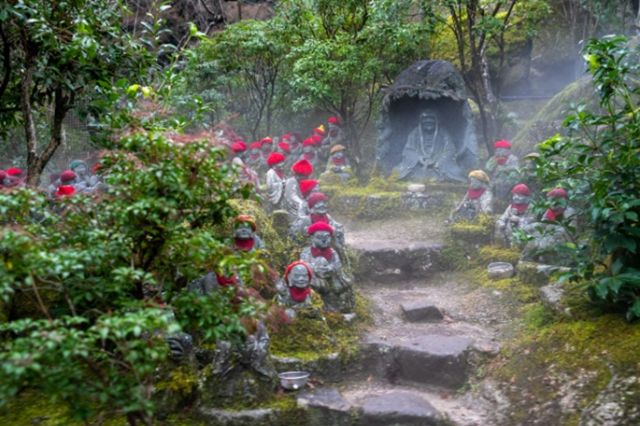
Gohyaku Rakan Garden is a fantastical spot with around 500 stone Buddhist images lined up. It stretches from near the gate of Daisho-in to where Reihokan is located, and the scenery is magnificent.
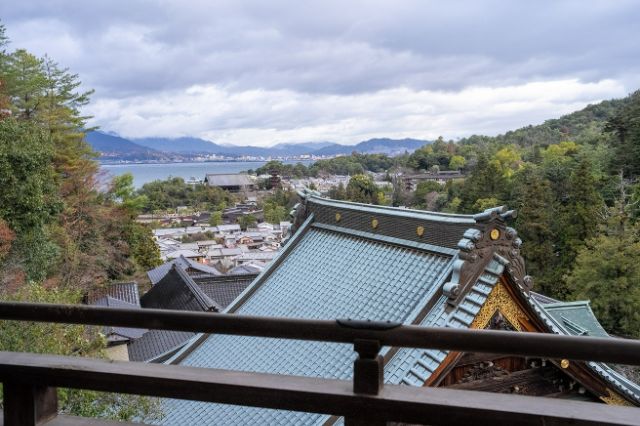
The walk through Daisho was incomplete, and visitors boarded the bus that picked them up, heading to Miyajima Omotesando Shopping Street.
Strolling through Miyajima Omotesando Shopping Street
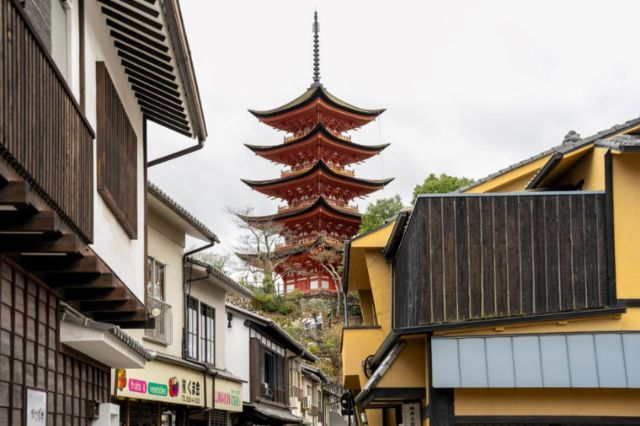
A 5-Storied Pagoda, which can be seen from Machiya-dori Street, which is one street back from Omotesando Shopping Street. The nostalgic townscape here is captivating.
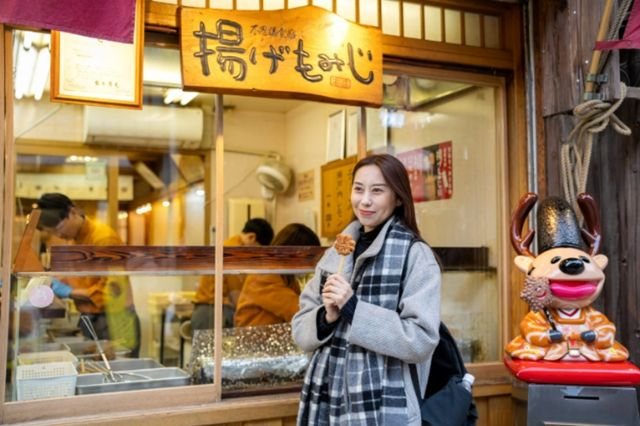
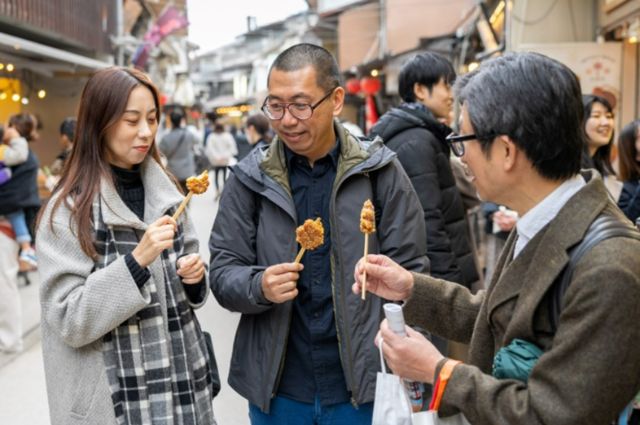
Lastly, visitors walked through Omotesando Shopping Street, which is lined with souvenir shops. Many kinds of stores are lined side by side here, including shops for folk crafts such as Miyajima ladles and carvings, souvenir shops, restaurants where visitors can taste Miyajiama's specialty cuisine using oysters and conger eel, and shops selling momiji steamed buns. They enjoyed eating and walking around, including fried momiji steamed buns, an evolved version of Hiroshima's famous confectionary, momiji steamed buns.
The Legacy Japan Project lets guests reserve famous shrines and temples registered as World Heritage Sites and National Treasures and lets them enjoy food by a top chef while fully experiencing Japanese culture. Through Japanese food and culture, which are the pride of Japan, it is gaining attention for its content, which is effective at attracting high-value travelers who want deeper and more special experiences.
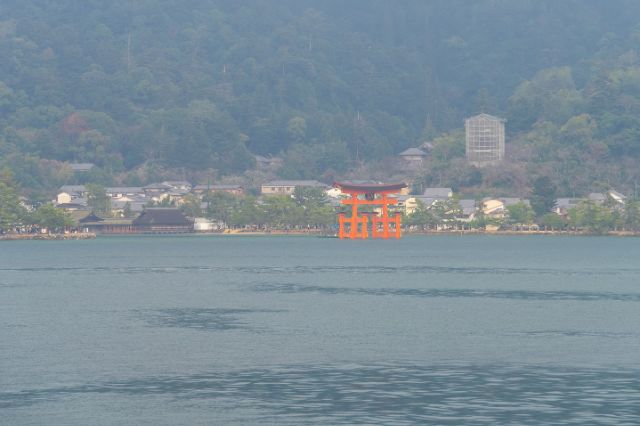
The scenery of the large torii gate seen from a boat is simply amazing.
Click here to see the Banquet Ceremony held at Shinden Hall, the central building of Ninna-ji Temple, the venue for the 2022 tour.
≫Check here to see information on past events
Information on future events will be announced on the official website for ELternal Co.,Ltd., so please check that site.
≫ELternal Co., Ltd. Official Site
This event's chef: Mr. Kenji Akai of AKAI
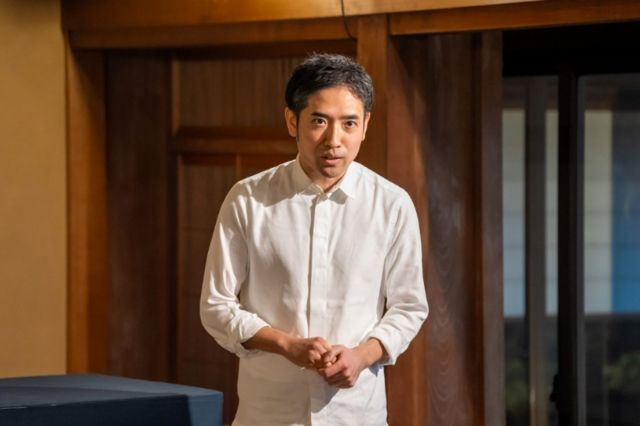
Mr. Akai was born in 1983 in Hiroshima. When he was working as kitchen staff in a Hiroshima wine bar, he became interested in French cuisine and went to France. He studied at Le Relais Louis XIII and La Maison Pic, polishing his cooking skills. After that, he trained at venues such as bridal halls, and in 2017, he gained attention by showing his talents in the Excellent Grand Prix RED EGG of RED U-35, a chef competition for discovering young talents. In May 2019, he fulfilled his long-held wish of opening a restaurant in his hometown of Hiroshima, called AKAI. In 2021, he acquired three toques from Gault Millau.
▼Daisho-in Temple
Disclaimer: All information is accurate at time of publication.
Thank you for reading our article.
Our goal is to take your culinary journey to the next level by helping you find the best restaurant. With SAVOR JAPAN, you can search and make reservations for
the Japanese Cuisine restaurants found in and around Hiroshima that fill your needs.
Discover more Japanese Cuisine restaurants by area
- Tokyo Area
- Near Tokyo
- Kyoto and Osaka Area
- Hokkaido Area
- Northern Honshu (Tohoku)
- Central Honshu (Chubu)
- Western Honshu (Chugoku)
- Shikoku
- Kyushu
- Okinawa and Ryukyu Islands
Discover more restaurants to eat Japanese Cuisine by area
Related Articles
New Articles
Categories
Cuisine
- Bars (23)
-
Japanese Cuisine (679)
- Kaiseki (46)
- Nabe (19)
- Okonomiyaki (24)
- Shabu Shabu (37)
- Soba (18)
- Sushi (137)
- Tempura (19)
- Teppanyaki (46)
- Shojin Ryori (3)
- Tonkatsu (12)
- Kushiyaki (10)
- Yakitori (45)
- Sukiyaki (35)
- Japanese Cuisine (341)
- Oyster (2)
- Sashimi/ Seafood (22)
- Unagi (eel) (32)
- Motsu Nabe (offal hotpot) (6)
- Mizutaki (chicken hot pot) (3)
- Oden (8)
- Kaisendon (seafood bowl) (11)
- Udon (2)
- Taverns(Izakaya) Cuisine (126)
- Western Cuisine (42)
- Italian/French Cuisine (94)
- Yakiniku/Steak (225)
- Chinese Cuisine (26)
- Ramen (Noodles) Cuisine (24)
- Cafe/Sweets (61)
- Other Asian Cuisine (5)
- Global/International Cuisine (7)
- Alcohol (46)
- Other (11)
Area
- Shikoku (10)
- Kyoto and Osaka (345)
-
Tokyo (462)
- Tokyo (288)
- Ginza (44)
- Roppongi (21)
- Shibuya (27)
- Shinjuku (46)
- Asakusa (20)
- Ebisu (12)
- Tsukiji (10)
- Tokyo Landmarks (4)
- Ueno (23)
- Akihabara (9)
- Ikebukuro (12)
- Jiyugaoka, Denenchofu, Nakameguro (9)
- Shimokitazawa (4)
- Kichijoji (3)
- Tachikawa (1)
- Omotesando, Harajuku, Aoyama (18)
- Akabane (1)
- Kagurazaka (4)
- Akasaka (10)
- Odaiba (2)
- Tsukishima, Harumi, Toyosu (3)
- Near Tokyo (101)
- Okinawa and Ryukyu Islands (58)
- Hokkaido (124)
- Northern Honshu (Tohoku) (31)
- Central Honshu (Chubu) (143)
- Western Honshu (Chugoku) (32)
- Kyushu (92)
Archives
- January 2026(5)
- December 2025(9)
- November 2025(4)
- October 2025(3)
- September 2025(6)
- August 2025(11)
- July 2025(19)
- June 2025(18)
- May 2025(34)
- April 2025(43)
- March 2025(30)
- February 2025(36)
- January 2025(26)
- December 2024(69)
- November 2024(31)
- October 2024(15)
- September 2024(39)
- August 2024(65)
- July 2024(31)
- June 2024(54)
- May 2024(61)
- April 2024(28)
- March 2024(31)
- February 2024(42)
- January 2024(32)
- December 2023(20)
- November 2023(5)
- October 2023(11)
- September 2023(7)
- August 2023(18)
- July 2023(8)
- June 2023(8)
- May 2023(18)
- April 2023(15)
- March 2023(1)
- January 2023(1)
- April 2022(2)
- March 2022(2)
- February 2022(1)
- January 2022(1)
- July 2021(1)
- March 2021(1)
- February 2021(1)
- December 2020(1)
- October 2020(1)
- September 2020(2)
- August 2020(10)
- July 2020(6)
- June 2020(9)
- May 2020(11)
- April 2020(8)
- March 2020(8)
- February 2020(13)
- January 2020(9)
- December 2019(24)
- November 2019(8)
- August 2019(14)
- July 2019(15)
- June 2019(18)
- May 2019(17)
- April 2019(16)
- March 2019(22)
- February 2019(22)
- January 2019(26)
- December 2018(34)
- November 2018(40)
- October 2018(32)
- September 2018(11)
- August 2018(8)
- July 2018(6)
- June 2018(9)
- May 2018(10)
- April 2018(21)
- March 2018(74)
- February 2018(39)
- January 2018(26)
- December 2017(60)
Keywords
- Omakase
- Accessible
- Affordable
- All-You-Can-Eat
- Amazing Scenery
- anime
- Art
- Autumn
- Awards
- Beer Gardens
- Breakfast
- Chef Recommendations
- Cherry Blossoms
- Chinese
- Close To Station
- Condiments
- Counter
- Coupon
- Crab
- Culture
- Dassai
- Dates
- delivery
- Early Summer
- Editor's Recommendation
- English Available
- Event
- Expo
- Fall Leaves
- Family-Friendly
- Famous Restaurant
- Famous Tourist Spot
- Fast Food
- festival
- fireworks
- Flower Farm
- Free Wi-Fi
- French
- Great Location
- Guide
- Hibachi
- hotpot
- How To
- hydrangea
- Hygiene
- Illumination
- Italian
- Izakaya
- Japanese
- Japanese alcohol
- jingisukan
- Kaiseki
- Kappo
- Kushiage
- Kushikatsu
- Kyoto
- Late-Night
- Lunch
- Manners
- matsusakagyu
- Michelin
- mizutaki
- Model Course
- monjayaki
- motsunabe
- Mt.Fuji
- Multilingual Menus
- Nabe
- Narita Airport
- New Year
- Ninja
- Noodle
- Oden
- Okonomiyaki
- omotenashi
- Onsen
- Osaka
- Osaka Station
- Photogenic Site
- pizza
- PR
- Private Room
- Ramen
- ranking
- Recipe
- Regional Cuisine
- Resort
- Rice Bowl Dish (Donburi)
- sacred places
- Sake
- Sakura
- Sashimi
- sea urchin
- Setouchi Area
- Shabu Shabu
- sightseeing
- Signature Dish
- Soba
- Solo Diners Welcomed
- Spicy Food
- Spring
- Steak
- Summer
- Sunflower
- Sushi
- takeout
- Teppanyaki
- Terrace Seating
- Tokyo
- Tokyo Experiences
- Tokyo Skytree
- Tokyo Tower
- unagi
- UNESCO
- Vegan
- Vegetarian
- Wagyu
- What Popular Gourmet Sites Recommend
- Whisky
- Wine Bar
- Winter
- Wisteria
- Workshop
- World Heritage Site
- World Writers
- Yakiniku
- Yoshoku
- Yuba
- Zen
Discover Restaurants By Area
-

Tokyo Area
Japan's largest city, Tokyo, is the center of culinary culture in Japan. Countless Tokyo restaurants serve every kind of food imaginable and the Toyosu fish market keeps restaurants stocked with the nation's finest fish.
-

Near Tokyo
Coastal areas, mountains and valleys surrounding Tokyo are bursting with tourist destinations, such as hot springs and ski slopes, where many unique foods are only available locally.
-

Kyoto and Osaka Area
The cities of Kyoto and Osaka, together with their surrounding areas, have greatly influenced Japan's culinary culture since the 7th Century. The region is renowned for its entertainment, Kobe beef, and wide-ranging traditional dishes.
-

Hokkaido Area
The island of Hokkaido is home to wide-ranging produce of the finest quality, such as rice, meat, vegetables, fish and fruit. Popular dishes from Hokkaido include robatayaki (food slowly roasted on skewers) and Sapporo miso ramen.
-

Northern Honshu (Tohoku)
The northern end of Japan's main island, Honshu, is renowned for its seasonal fruit and vegetables, nation-leading harvest of fish (especially tuna from Ohma), and delicious beef from Yonezawa, Sendai and Yamagata.
-

Central Honshu (Chubu)
Chubu is in the center of Japan's main island, Honshu, and its culinary culture reflects its position between Japan's western and eastern halves. Delicious Hida beef, world-famous Mount Fuji and many acclaimed sake breweries are in Chubu.
-

Western Honshu (Chugoku)
Chugoku, on the southwest of Japan's main island, is rich with diverse produce. Many of its products are praised as Japan's best, including Matsuba crabs from Tottori and oysters from Hiroshima. Its pears and muscats are also top grade.
-

Shikoku
The mild climate of Shikoku is ideal for growing citrus fruit such as sudachi. Shikoku is also famous for Sanuki udon noodles, huge yields of tiger prawn from Ehime Prefecture and the best torafugu (tiger globefish) in the country.
-

Kyushu
Western culture was first introduced to Japan through Kyushu, Japan's third largest island, where the influence of Portuguese and other western cuisine influenced the creation of a colorful culinary tradition.
-

Okinawa and Ryukyu Islands
Okinawa, Japan’s southernmost prefecture, is a treasure trove of distinctive dishes and drinks that have become popular throughout Japan, including Okinawa soba, unique sushi toppings and Awamori distilled liquor.
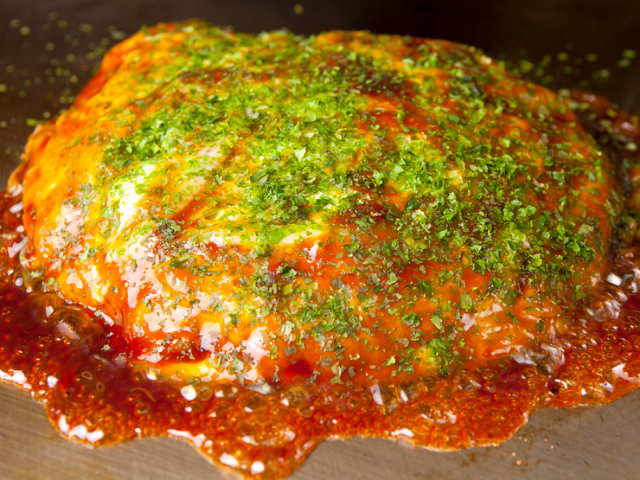
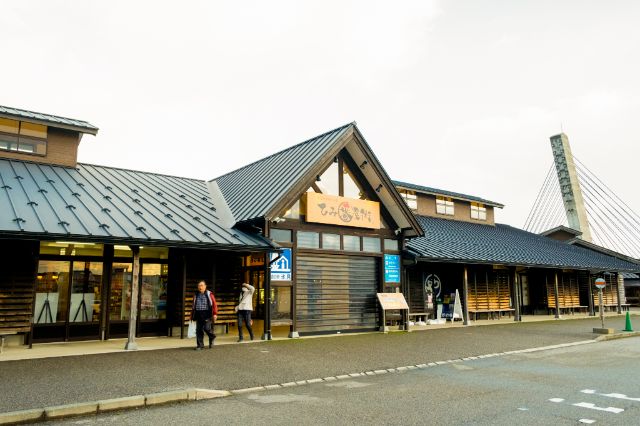
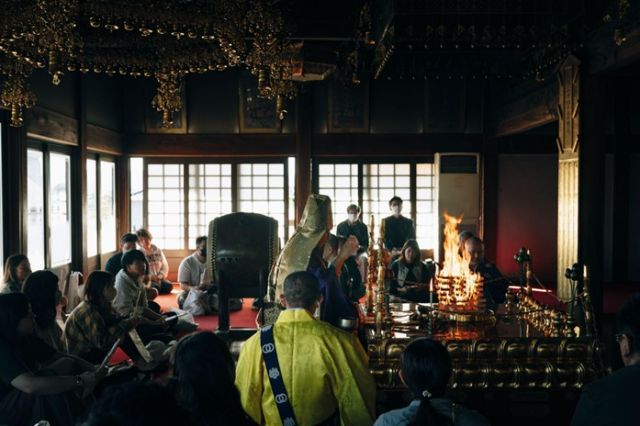
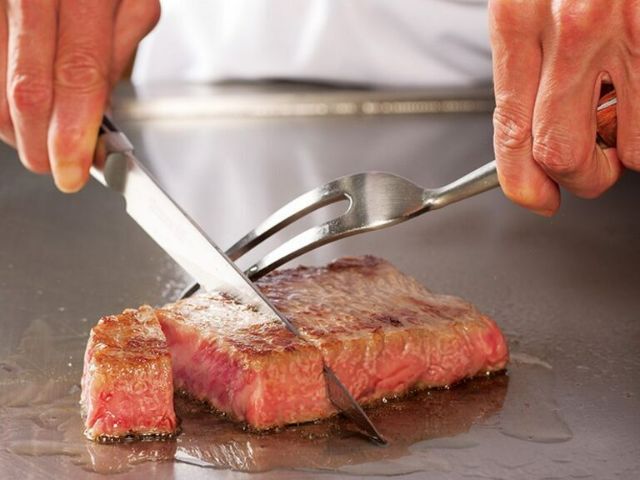
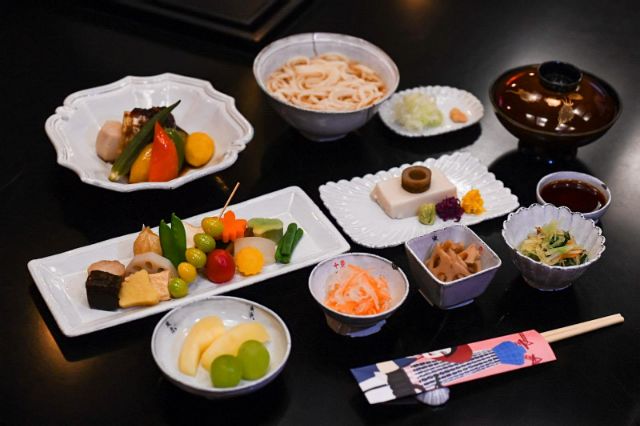
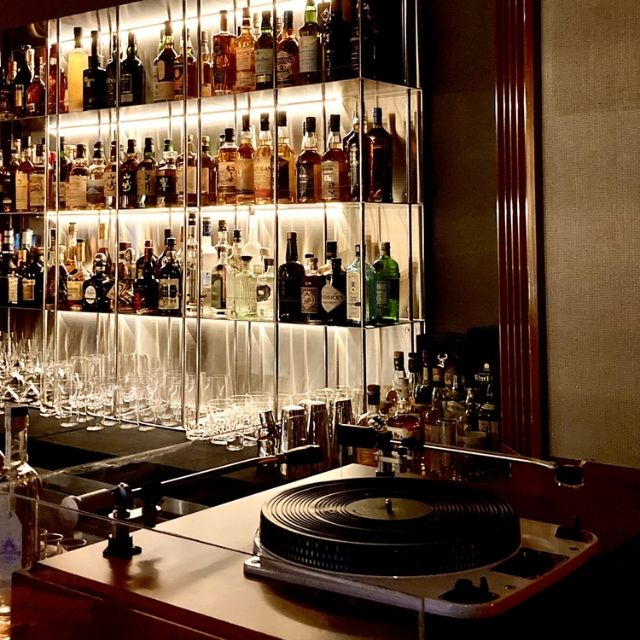
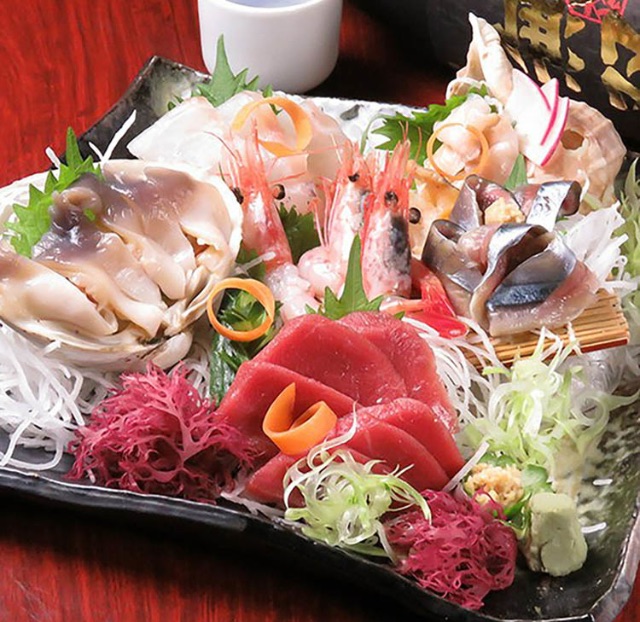
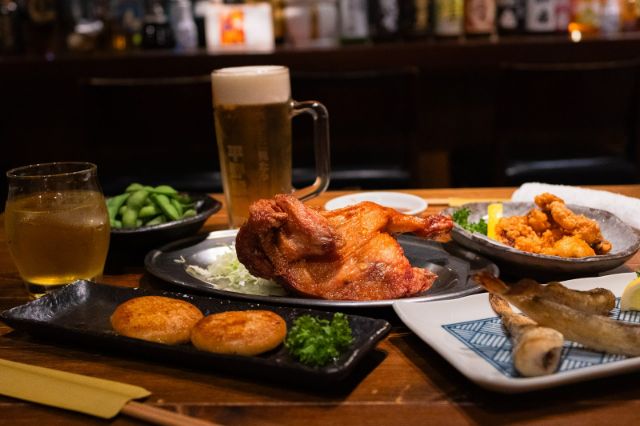
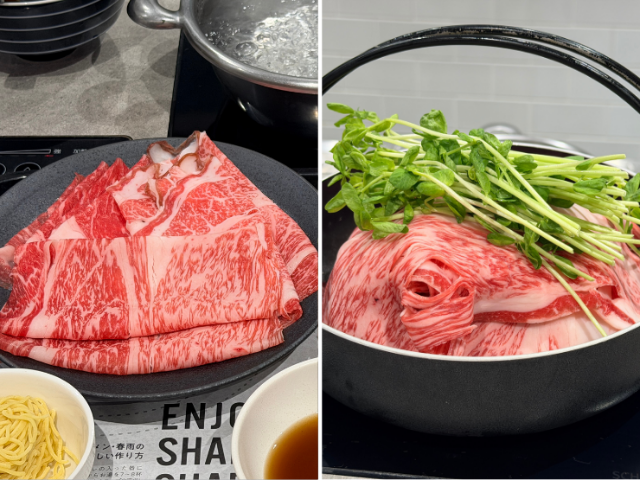
![[Daiwa Afternoon Tea Recommendations] YORIMICHI Odaiba | AQUA CITY Sea View Desserts and Seaside Stroll Suggestions](https://rimage.savorjapan.com/svj/image/discover_oishii_japan/6824/article_head_150x105z.jpg?t=1767771968)